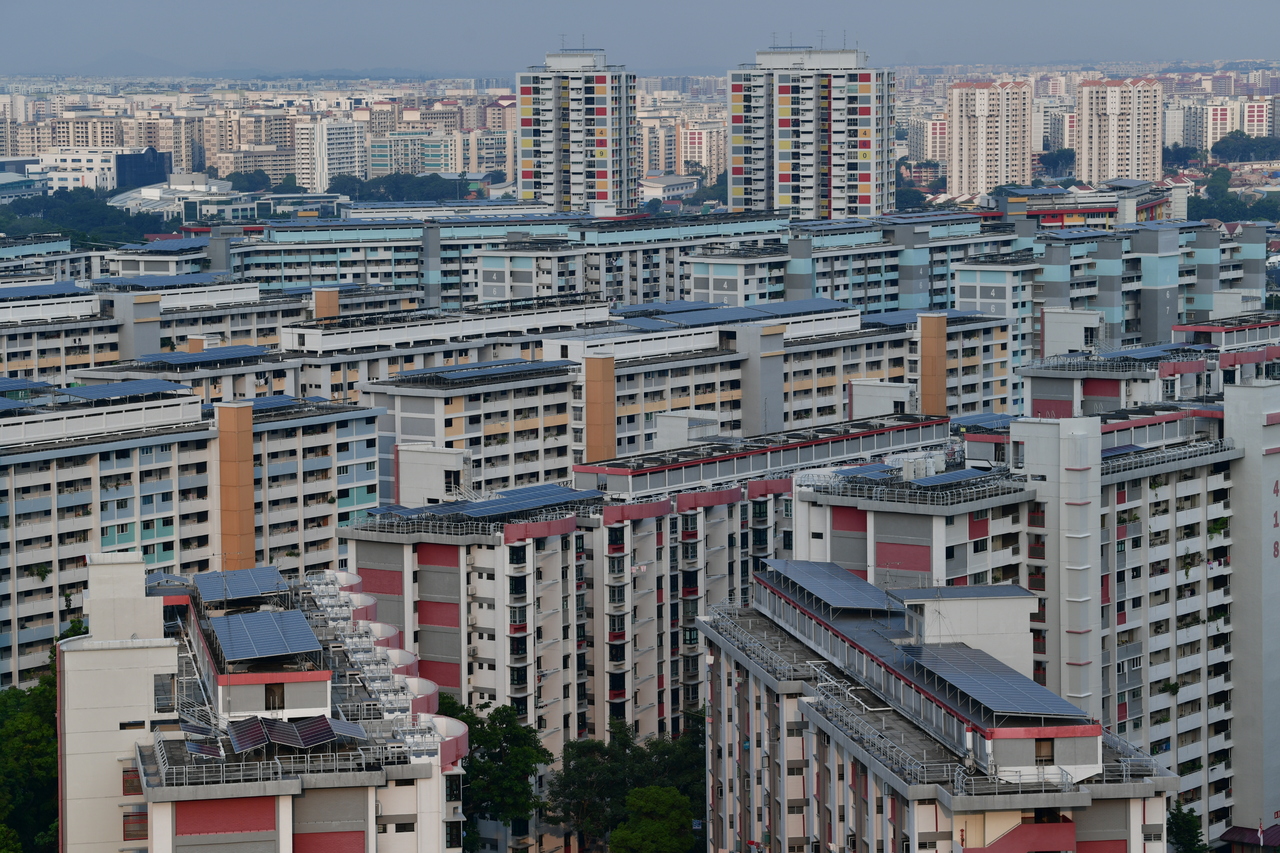Solar panels on rooftops or floating on water may be a common sight soon
Sign up now: Get ST's newsletters delivered to your inbox

Singapore is aiming to harness 1.5 GWp of solar energy by 2025, almost four times the current solar usage of 390 MWp.
ST PHOTO: JOYCE FANG
Follow topic:
SINGAPORE - Solar panels installed on unused land and rooftops, or floating on bodies of water, may soon be a common sight as the country accelerates its use of solar energy.
Singapore is aiming to harness 1.5 gigawatt-peak (GWp) of solar energy by 2025, almost four times the current solar usage of 390 megawatt-peak (MWp).
The 2025 goal, announced by Minister for Trade and Industry Chan Chun Sing yesterday, will be able to power about 260,000 households annually, meeting about 2 per cent of Singapore's total electricity needs. The new target will accelerate the country's goal to employ 2GWp of solar energy by 2030.
Speaking at the Singapore International Energy Week, Mr Chan said the public sector will take the lead in expediting solar capacity.
To harness solar energy on an island with land constraints and sometimes cloudy skies that block out sunlight, the strategy is to maximise the deployment of solar panels, optimise their use with energy-storing technologies, and invest in research and development.
Professor Subodh Mhaisalkar, executive director of the Energy Research Institute at Nanyang Technological University, said: "New technologies for building integrated photovoltaics, bifacial solar cells and high-efficiency solar cells would also need to be developed."
The nation's first floating and stacked energy storage system, on Keppel Offshore & Marine's Floating Living Lab, an upcoming offshore test bed, is expected to be up and running in 2023.
Separately, clean energy solutions provider Sunseap will be building Singapore's largest offshore floating solar panel systems along the Strait of Johor. The electricity generated can power about 1,250 four-room HDB flats.
Sunseap's head of marketing and communications Rob Khoo said training and recruitment of talents in the solar industries must increase to cater for more solar energy projects.
Prof Subodh said that for the 1.5GWp target, which is a "very major scale-up" from where the country is at today, strong participation from the private sector is needed.
Dr Thomas Reindl, deputy chief executive of the National University of Singapore's Solar Energy Research Institute of Singapore, said land lease periods and access to project financing are some things that private entities need to consider before starting solar projects.
"Sometimes, the duration of solar installation, which is up to 20 years or more, may exceed the remaining lease left on the land or rooftop of a private company," he noted.
He added that mobile solar panels could sit well with private companies that invest in solar energy.
"So, if the building owner has only 10 or 12 years left, but those companies have the option to move (the solar panels) somewhere else, their returns would still work out," added Dr Reindl.

